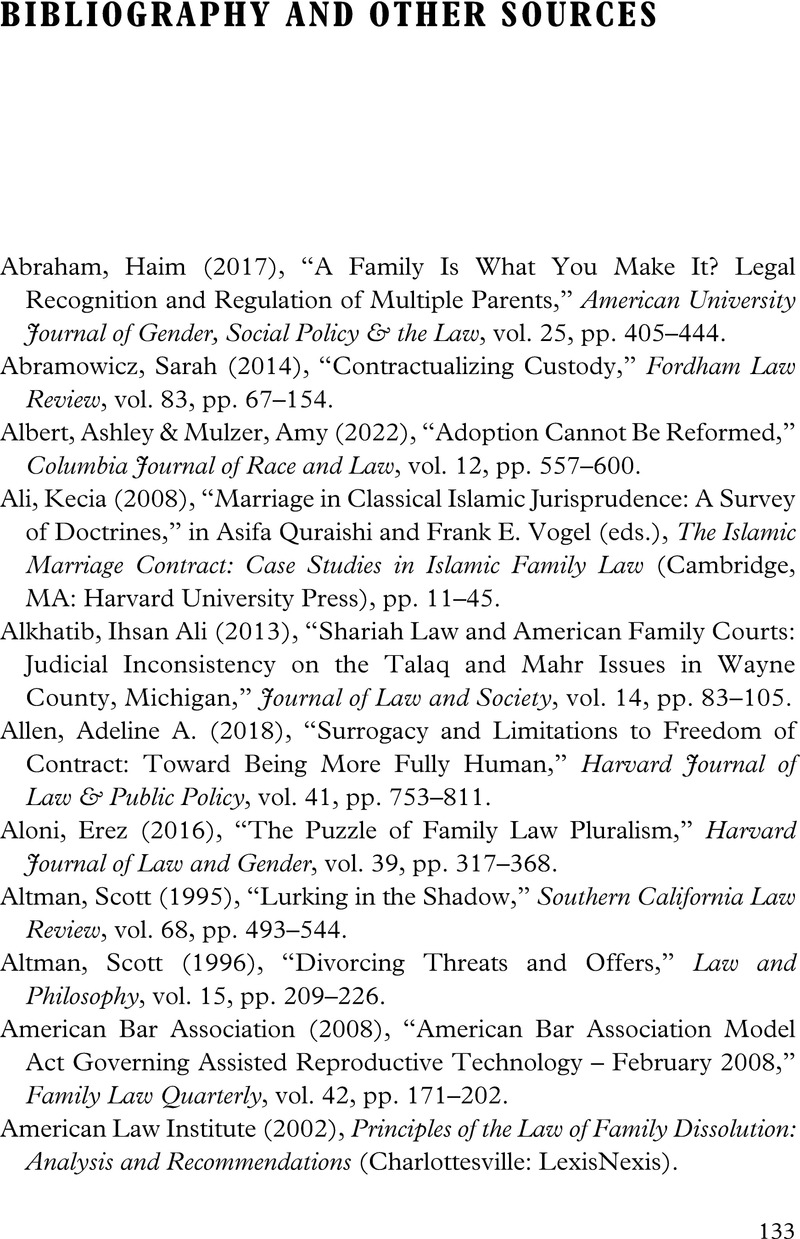Book contents
- Families by Agreement
- Families by Agreement
- Copyright page
- Contents
- Preface
- Table of Cases and Statutes
- Introduction
- 1 General Considerations
- 2 Marriage
- 3 Agreements within Marriage
- 4 Divorce
- 5 Agreements about Parentage
- 6 Adoption Agreements
- 7 Agreements about Process
- Conclusion
- Bibliography and other Sources
- Index
- References
Bibliography and other Sources
Published online by Cambridge University Press: 03 August 2023
- Families by Agreement
- Families by Agreement
- Copyright page
- Contents
- Preface
- Table of Cases and Statutes
- Introduction
- 1 General Considerations
- 2 Marriage
- 3 Agreements within Marriage
- 4 Divorce
- 5 Agreements about Parentage
- 6 Adoption Agreements
- 7 Agreements about Process
- Conclusion
- Bibliography and other Sources
- Index
- References
Summary

- Type
- Chapter
- Information
- Families by AgreementNavigating Choice, Tradition, and Law, pp. 133 - 150Publisher: Cambridge University PressPrint publication year: 2023



